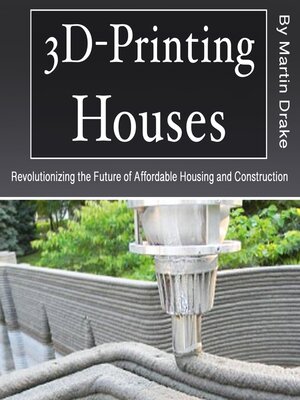
Sign up to save your library
With an OverDrive account, you can save your favorite libraries for at-a-glance information about availability. Find out more about OverDrive accounts.
Find this title in Libby, the library reading app by OverDrive.



Search for a digital library with this title
Title found at these libraries:
| Library Name | Distance |
|---|---|
| Loading... |
3D printing is transforming industries worldwide, and construction is no exception. As housing shortages and high building costs continue to challenge communities, 3D-printed homes offer a promising solution. This technology enables faster, more affordable, and adaptable construction, making homeownership and safe housing accessible to more people. By automating traditional processes, 3D printing redefines what's possible in construction—reducing waste, customizing designs, and speeding up building times. This book explores the groundbreaking impact of 3D printing on housing, highlighting its potential to revolutionize construction, improve affordability, and reshape the future of urban and rural living.
3D printing, also known as additive manufacturing, is reshaping the construction industry by introducing innovative approaches to building homes, offices, and infrastructure. Traditionally used in manufacturing and prototyping, 3D printing has now evolved into a reliable construction method that involves layering material to create structures, walls, and entire buildings from digital models. This technology allows construction companies to bypass many of the labor-intensive processes typically associated with conventional building techniques, offering an efficient, cost-effective, and flexible approach to construction.
In 3D printing for construction, materials like concrete, mortar, and specialized compounds are extruded layer by layer, following a precise digital design that directs robotic arms or large-scale printers. These printers can operate continuously, producing walls, floors, and structural elements at a faster pace than manual construction. As a result, 3D printing not only reduces the time required to build but also significantly decreases labor costs, as fewer workers are needed on-site. Projects that once took months can now be completed in weeks or even days, depending on the scale of the building.







